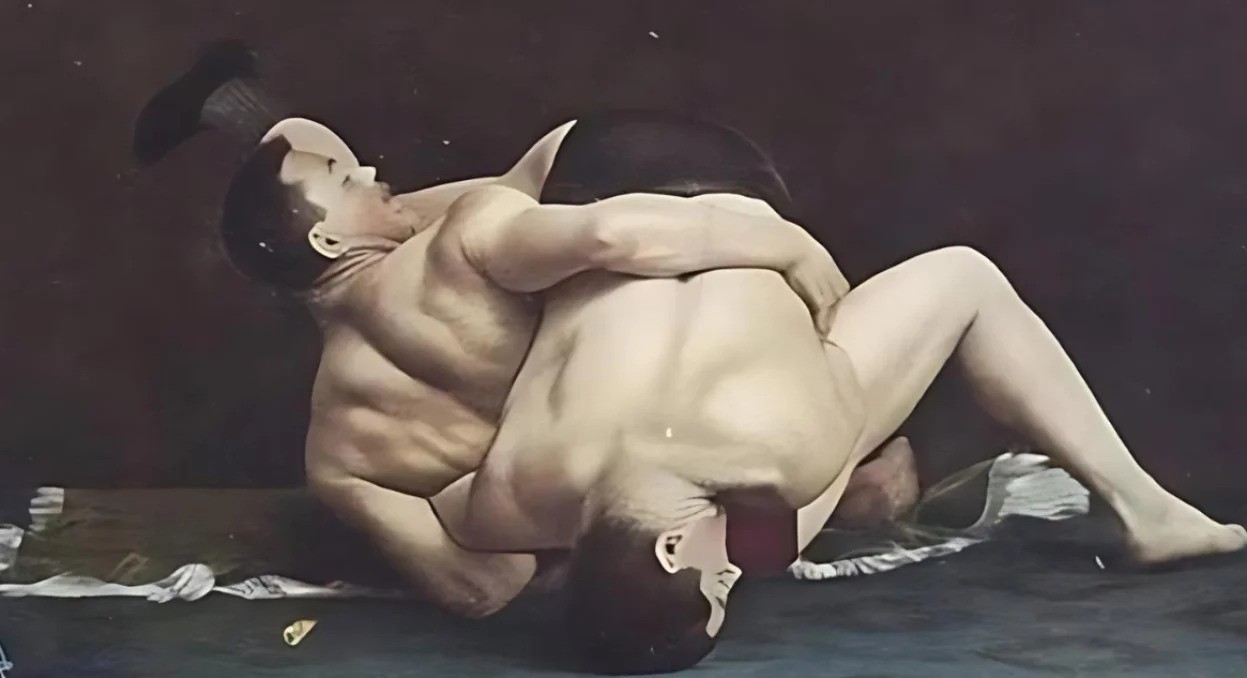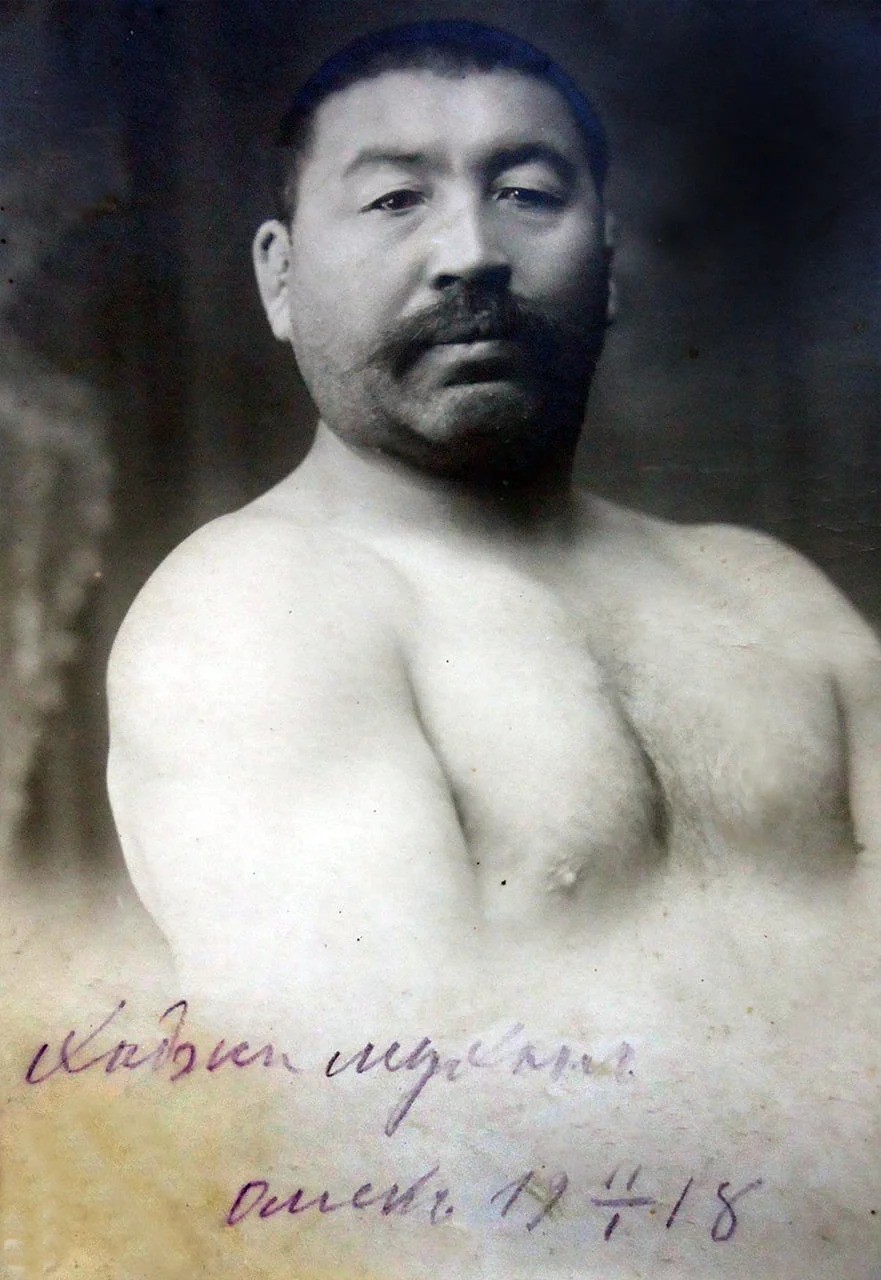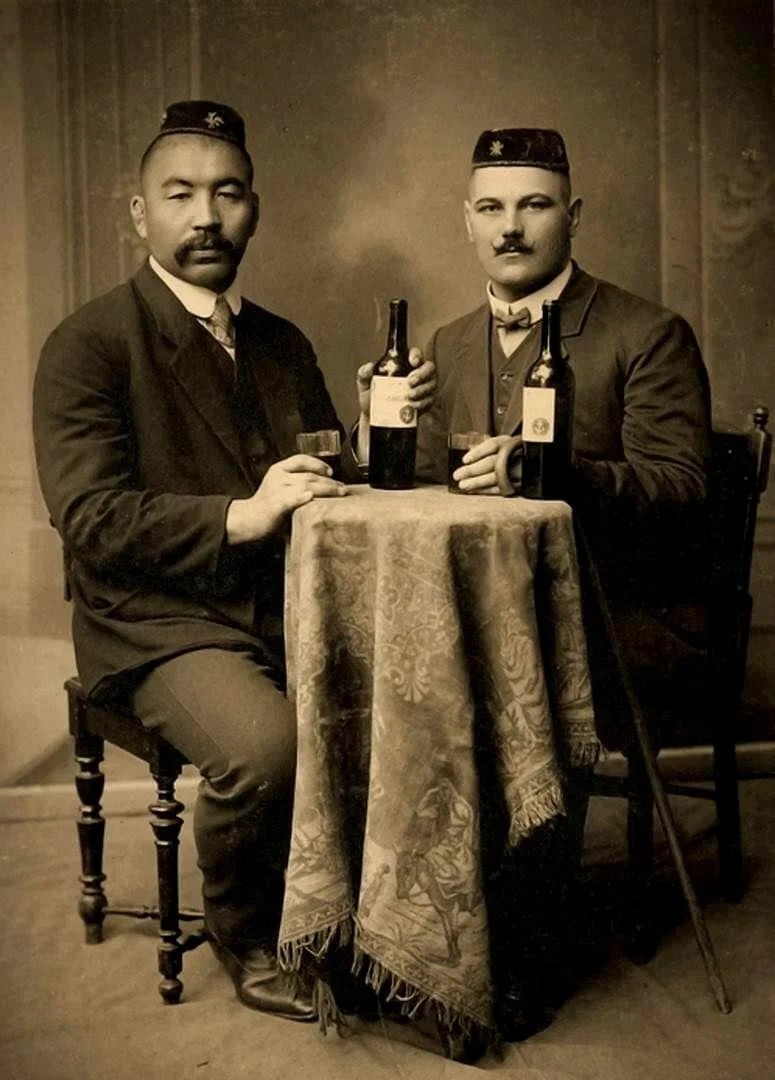Editor’s note: Discover Kazakhstan is a column dedicated to exploring the rich cultural heritage and natural wonders of the country. Each article explores various aspects of Kazakh life and history, offering insights and stories that highlight their unique significance.
At the beginning of the twentieth century, a time when soccer had not yet become the world’s favorite sport, basketball was just beginning to take off, and the Olympic Games included not only athletic competitions but also literary, sculptural, and musical contests, wrestling was undoubtedly the most popular and entertaining sport globally.

Qajymuqan Munaitpasov during the fight in Tomsk in 1910. Photo credit: Egemen.kz.
Wrestling, unlike hockey and tennis, was played by everyone, everywhere, on all continents. It was popular, but unlike gymnastics, it was spectator-friendly, attracting thousands of fans around the world. A wrestling match often became a truly international show, with wrestlers from all over the world, from different cultures and wrestling schools, competing against each other. Even during times of war and confrontation, famous wrestlers continued to travel the world to entertain local audiences.
Before the advent and spread of television, few people knew these heroes by sight, but their names alone were often enough to fill a huge hall for a match with a local champion. And it was at this time that the public in various cities around the world, from Harbin to Paris, began to talk about the stars of professional wrestling: Yamagata Muhanura, the champion of Japan, Korea, and Manchuria; Black Ivan from Russia; the fearless Turk Kara Mustafa; and the mysterious wrestler known as the ‘Red Mask.’ Bear in mind that this was long before the practice of wrestling names became popular in American wrestling. It may have been worth trying to gather all these wrestlers from different parts of the world for one tournament if not for one important detail—they were all one and the same person! You see, the Kazakh wrestler Qajymuqan Munaitpasov performed under these pseudonyms, using them to conquer professional wrestling competitions in Paris and all over the world. He became the first Kazakh world champion in ‘French wrestling’ exactly 115 years ago.

Qajymuqan Munaitpasov in 1918 in Omsk. Photo credit: Egemen.kz.
Munaitpasov’s life and his stage and sports images have always been shrouded in legend, to which he, a talented showman and storyteller, contributed a great deal. Muqan Munaitpasuly was born in the village of Karaotkel in the Akmola province of the Russian Empire, which is located so close to the modern capital of Kazakhstan that it has become one of its suburbs. Qajymuqan was said to be a direct descendant of the legendary Kobylandy Toktarbayuly (Qobylandy Batyr), the hero of the epic of the same name often associated with the founding of the Kazakh Khanate.

Munaitpasov and Czech wrestler Karel Pospíšil demonstrate wrestling techniques. Photo credit: Egemen.kz.
Munaitpasov, the first Kazakh professional wrestler, began in the sport at an early age and was honored with a catchy wrestling nickname ‘Bala Baluan’ (child wrestler). He started practicing qazaqsha kùres (Kazakh wrestling), an ancient and traditional type of wrestling common in the Kazakh steppe, and he was taught its intricacies by his grandfather. However, he later became popular not as the winner of regional Kazakh wrestling tournaments but as a circus wrestler. Such performances were an important part of circus shows, and having started his professional career in the circus, he made his debut in 1901 in Omsk, specializing in French wrestling. Here he fought the experienced Andrei Zlobin, who later encouraged the young Kazakh to join Ivan Lebedev’s (known as Uncle Vanya) wrestling school in St. Petersburg.
It was Lebedev, an eager and ambitious promotor, who helped craft Munaitpasov’s stage personas. He helped transform the Kazakh wrestler into the Japanese samurai and emperor’s bodyguard Yamagata Muhanura, the Red Mask, and the Turkish giant Kara Mustafa. He also performed under the pseudonym ‘Black Ivan,’ which he inherited from a team consisting of himself and three other Ivans: Poddubny, Zaikin, and Shemyakin.

Munaitpasov (C), Kokbai Kunanbayev (Abai’s brother sits in the center), Turagul Ibragimov (Abai’s son, second from the left), Mirzhakip Dulatov (fourth from the right), Akhmet Baitursynov (R) and other representatives of the Kazakh intelligentsia. 1918. Photo credit: Wikimedia Commons.
The young Kazakh wrestler achieved his first international success after a brilliant performance in Harbin, where he won a gold medal in the jiu-jitsu championship, although he had previously practiced only Kazakh and French wrestling. In 1909, in Sweden, he officially became the world champion of French professional wrestling, paving the way for future world and Olympic champions from Kazakhstan.
What was then called ‘French wrestling’ was classical wrestling, now known as the Greco-Roman style. It was rightly considered the most powerful and graceful of all the forms, and as the name implies, Paris was considered the Mecca for all great wrestlers. Munaitpasov, who had won world championships in 1908, 1909, 1911, and 1913, won his last championship in Paris in 1914, although he had won important tournaments in the city before.

Munaitpasov with popular Estonian wresler Karl Tomberg in a photo studio. Photo credit: Egemen.kz.
Munaitpasov’s tale in history told of him being not only a great and invincible fighter but also a great lover of the arts. From the earliest days of his circus performances, he participated in humorous sketches, sang, and played the dombra beautifully. In 1926, he opened the first Kazakh professional theater in the then Kazakh capital of Kyzylorda and even took part in some performances. In 1927, he officially received the honorary title ‘Batyr of the Kazakh People.’
Based on an original article by Zhar Zardykhan, Kazakh historian, Qalam’s Editor-in-Chief. The full article can be found on the Qalam project website.


